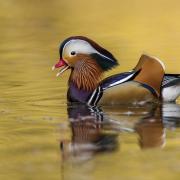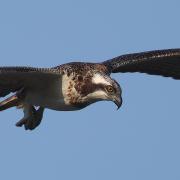One of the challenges, but thrills, of being a naturalist in a seasonal climate is the ever-changing roll call of species to immerse yourself in. After a long winter period scanning estuary wader flocks, I find myself having to revisit botanical books to refresh my memory of spring flowers.
One group of insects which demand a quick flick through the guidebooks in late spring, are dragonflies and damselflies. Reminding myself how to identify the various life stages and sexual dimorphism of southern hawker, migrant hawker and common hawker dragonflies’ pre-flight season, for example, is an absolute essential.
Let’s look more closely at this fascinating group which are to be enjoyed on warm sunny afternoons in June.
Binoculars are useful, but these insects are such acrobats, you will be using your unaided eyes for much of the time to watch them hawk and swoop, hover and dart as they patrol the open water of a pond, or delicately hover above a bubbling stream in dappled woody shade.
For most of this group we really ought to know them as ‘dragonswims’, as the adult flight stage lasts a fraction of their total lifespan, with the majority spent as a gill-breathing swimming nymph.
But, by summer, this year’s cohort of nymphs will have dragged themselves up out of the water, usually by climbing emergent vegetation early in the morning. Whereupon they will split their nymphal skin and emerge as an air-breathing, flying insect. And what supreme flyers they are.
The dragonfly which emerges from its old skin will be coloured browny-green and is known as a teneral. While flight muscles strengthen and wings stiffen these sub-adults are vulnerable in the crucible of conflict which are the territorial breeding sites, and so they will mooch off away from water to feed and gain strength. Once full adult colour develops, such as the dazzling sapphire blue and jade of an emperor dragonfly, they will be ready to return to water and look to secure a patch and a mate.
Mid summer is my favourite time to watch the miracle of dragonfly flight, and what’s great is this is a natural spectacle which doesn’t necessitate a horrifically early start. Dragonflies like it when the sun is up and the air is warm.
Let’s take the emperor dragonfly as our typical species. Sure, damselflies and demoiselles differ pretty substantially, but the basic principals of flight are the same, the emperor just does it better!
Dragonflies have four wings which are attached at the thorax (the body part sandwiched between the head and the abdomen) by strong veinous bases. The base of these wings attach to big flight muscles which account for the chunky shape of the thorax.
Each wing is a network of veins covered in a thin, transparent membrane and each wing can be moved independently from each other. Not only can the wings pitch and roll to influence movement, they can stiffen and relax around those vein joints to give the surface ever-changing aerodynamic properties. And, finally, each wing’s direction of stroke can be controlled to further effect movement. To try and explain how an insect with an extremely rudimental neural network controls these multiple factors every fraction of a millisecond is, frankly, beyond me and so let's just put it down to good old ‘instinct’.
However they do it, those four incredible feats of organic engineering can propel dragonflies beyond speeds of 30 miles per hour, and can accelerate and decelerate from or to a static hover virtually instantaneously. You can try and keep up with a flying dragonfly though your binoculars, but the only chance you’ve got is if it’s a considerable distance away; close at hand you will be lucky to enjoy a moment or two while it hovers.
But, the longer you spend watching dragonflies, the more you’ll notice their interactions. Seeing off rival males with frighteningly loud catering of wings; sudden darts vertically to capture prey and, perhaps the most incredible feat - the courtship wheel.
A male will use strong claspers at the end of its abdomen and pinch the female just behind the head. The male and female dragonfly will then fly in tandem, those combined eight wings processing billions of commands each minute, before the female reaches forward with her abdomen and joins the male just behind the thorax to complete the flying wheel. In damselflies this creates a really rather fitting heart shape.
If you find yourself at a loose end one sunny afternoon, wend your way to a nearby pond or wetland and revel in the real magic of dragons!



























